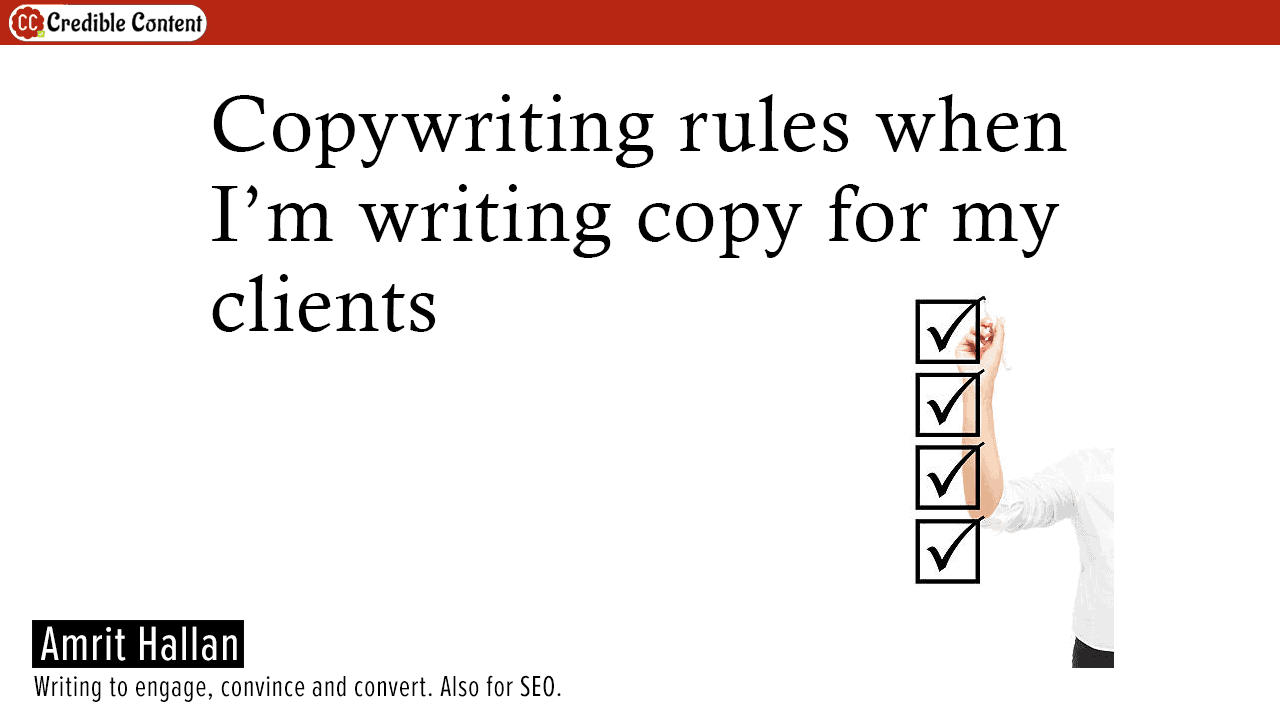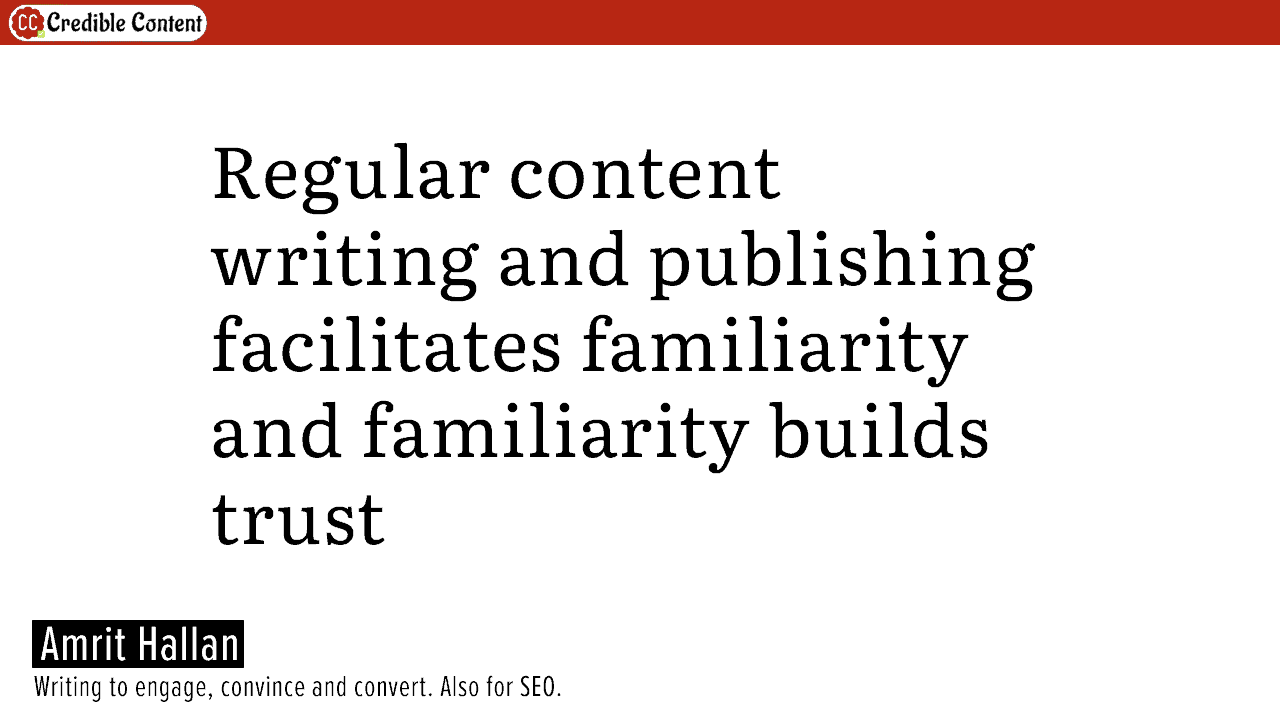
Benefits of regular blogging.
In the beginning blogging started as a hobby movement. Publishing was being democratized on the Internet and many tools came to exist that would allow people to publish their thoughts and opinions without expensive software.
From Blogger.com to Movabletype to Tumblr, and everything in between, I have used practically every blogging platform, before finally settling with WordPress.
My website and my blog these days are powered by WordPress. Anyway, this is a side issue.
Once thousands of people started publishing their blogs regularly, they discovered that Google preferred blog posts over regular company web pages.
It wasn’t surprising. People shared more information through blog posts than through company web pages. The blogging content was more search engine friendly, especially when you used software like WordPress.
Most of the blog posts that you publish using WordPress are search engine optimized. These posts have SEO-friendly URLs. They have titles with the main keywords. People use headings and subheadings to create different sections. Many posts are interconnected through hyperlinks. Through the “Recent Posts” section, almost every post become scrollable.
Search engines like Google found blogs ideal for higher search engine rankings.
Soon the SEO community discovered blogs and started using blog posts to improve search engine rankings and to generate more traffic.
It worked wonders for many businesses. I definitely benefited from blogging. I still do.
Just as it happens with every technology and every trend, once a few people begin to benefit from it, more people want to benefit from it.
When more people benefit from it, they want to find faster ways to benefit from it. They begin to find workarounds. They begin to “exploit” loopholes and capabilities.
The same happens with blogging. These days almost every business website has a blog. Every entrepreneur knows that blogging is an essential part of search engine optimization. You have SEO plug-ins that tell you how to write (I recently uninstalled such plug-ins) to improve your search engine rankings. They tell you how many images are good and how many images are bad or whether you are repeating the keywords enough number of times or not.
Despite the fact that the search engine crawlers these days can crawl and index millions of pieces of content per second, the audience is still limited.
When you search for something, Google tells you that these many links have been found.

Content writing services – number of Google results.
Google is just trying to make you feel good that it has so much information for your queries. Of course, you’re not going to go through all these millions of links. At the most you’re going to check out the first and the second pages of search results.
Google may be crawling and indexing millions of links every day, the way people use this information hasn’t changed much. Most of the people still don’t go beyond the third page.
So, almost everyone is scrambling for the limited space.
This is where people begin to get disenchanted, and they lose confidence in the effectiveness of blogging. Not every blog post can appear on the first page. And that too, when you are competing with millions of blog posts for the same keyword or key phrase.
This is where they commit a mistake.
Don’t publish blog posts just to improve your search engine rankings

If you think that your blog exists only to improve your search engine rankings, you’re going to be in for disappointment.
The search engine benefits of blogging begin to show after some time. And that too if you blog regularly – 3-4 times every week.
Blogging definitely has SEO benefits and if you publish regularly, these benefits begin to manifest in a couple of months (provided you are publishing every day or every alternative day), but don’t just focus on improving your SEO.
The problem with just focusing on SEO is that then it becomes your primary concern. You want every post to rank well and for that, you take “measures” such as using keywords these many times, using the keywords in the title, and so on.
Yes, these things are important, and I strongly advise that you should use keywords in the title and in the copy even when you are not worrying much about your search engine rankings, but then there comes a time when instead of sharing your knowledge, you are constantly trying to improve your search engine rankings.
This becomes self-defeating. The more you try, the more you fail.
Is blogging no longer beneficial?

Blogging is still one of the best ways of improving your search engine rankings, engaging your audience and sharing your knowledge and experience.
Then why do so many people say that blogging is no longer beneficial?
They jumped on the blogging bandwagon just because they thought that blogging would improve their search engine rankings.
They had no intention of actually publishing engaging content to educate and inform and to add value. Their sole purpose was to exploit the platform to fill their websites and blogs with target keywords and key phrases.
The problem with this approach was, there were hundreds of thousands of people publishing blogs with the same attitude and the same approach.
How people search on Google and other search engines never changed. How many pages people were ready to check for the search results before giving up, never changed. The space was as limited as it was before.
The only thing that changed was, Google had more pages to crawl and index. The competition increased. The competitiveness of the keywords increased – it was harder to rank for the same keywords.
The more they tried to trick, the more “workarounds” they found, the smarter the Google ranking algorithm became at weeding out low-quality content.
Since these people mostly run behind razzmatazz, they began to find social media more attractive. They lost interest in blogging because well, running a successful blog is hard work. Rewarding, yet, hard work.
First they declared that email marketing is dead because they spammed the crap out of it – email marketing is still thriving and in fact, is more effective than it was 20 years ago.
Then they declare that blogging is no longer effective.
Blogging is still very much effective for those people who understand what blogs are for.
You need to understand that higher search engine rankings are a byproduct
Your higher search engine rankings are like money. How do you earn money?
Assuming you are not a swindler, or a robber, or a criminal in general (who work for the sole purpose of getting hold of money), you need to earn the money you have.
You are an engineer, and you are paid for your engineering skills. You are a web designer and you are paid for your web design skills. I am a writer, so, I’m paid for my content writing and copywriting skills. Famous performers become celebrities and they are paid for their ability to perform as well as for their celebrity status (which is, branding).
Hence, money doesn’t come to you for the heck of it. You do something else, and the money is a byproduct. Although, your ultimate goal is to earn as much money as possible, money can only come to you when you do something worth paying for. People, organizations, and businesses don’t just give you money because you exist. They give you money because you deliver something, or you satisfy some need.
The same happens with search engine rankings. Your rankings won’t improve because you desperately want to improve your rankings. Your rankings improve because you publish high quality content, content that people find useful. The more relevant your content is, the better search engine rankings you will enjoy. Hence, your search engine rankings are a currency.
This brings me back to the original question that I asked in the title of this blog post: Should you be blogging regularly?
This question was triggered by this Entrepreneur blog post that I came across yesterday: Why blogging should be on your weekly to-do list this year.
Blogging still delivers to those who understand the true essence of blogging – engaging audience by sharing valuable information.
The above Entrepreneur blog covers some important points about why you should be blogging regularly, but I will rewrite them here for my own audience.
Your blog gives reasons to people to visit your website multiple times

Familiarity builds trust. Whereas I definitely get new business queries from people who find my website on Google and have visited for the first time, people who actually end up becoming my clients (pay me for my services) have visited my blog or my website multiple times.
They have received my updates multiple times. They have read a few of my blog posts. They have come across my updates on LinkedIn.
Now, I’m not saying that I never get business from people who have just landed on my website – I definitely do – but most of my business comes from people who have visited my website multiple times.
This is true for almost every business. Nobody becomes your customer or client the first time he or she visits your website. People need some sort of familiarity. A blog that you regularly publish gives them a reason to access your content and consequently, become familiar to you, and then consequently, begin to trust you.
You get a chance to demonstrate your expertise through your blog

How do you convince people that you know your stuff? How do I convince people that I am a content writer who can provide engaging content to them and also help them improve their search engine rankings?
I regularly share my expertise on my blog. When people come to my blog, they know that I have covered practically every topic on content writing, content marketing and copywriting.
Hence, if you are looking for a content writer, do you feel confident working with a content writer about whom you don’t know much, or a content writer you are familiar with because he or she regularly shares his or her expertise through his or her blog?
Your blog gets you backlinks
As you regularly demonstrate your expertise in your field, people begin to respect you. They begin to look at you as an authority figure. After all, you need to have some knowledge to be able to write so much on your blog.
Also, very few people simply want to blow their own horn. They need validation.
Suppose I explain to you a particular method that can improve engagement on your website, I may also like to backup my claim by linking to another experienced content writer or digital marketing expert who says the same thing.
The more you blog, the more content you provide to other bloggers and publishers to link to. This improves your search engine rankings because backlinks are one of the most important requisites for higher search engine rankings. Especially the backlinks you earn through the strength of your content.
Regular blogging helps you build your mailing list
One of the biggest benefits of building a mailing list is that people trust you enough to share their email ID with you and give you access to their inboxes.
It shows they want to keep in touch. In case they are unable to visit your blog or website on their own, they don’t want to miss the great content that you are publishing. Subscribe to your mailing list only when you have something good to say regularly. They won’t be interested in you if you publish once or twice a month.
Regular blog publishing increases your search engine crawling rate

Google is constantly crawling the web to index new content and update existing content. But it needs to optimize its resources. If a website is updated once a month or once in two months, it’s no use sending out crawlers in its direction every day.
Hence, Google keeps track of websites that are published or updated frequently and then sets the crawl rate accordingly.
On one of my own blogs, I have observed that when I updated my blog multiple times in a day, my content was crawled and indexed within minutes. It was like, I published a blog post and then when I searched for it after a couple of minutes, it was there in the search results!
If you publish regularly then Google begins to crawl your website regularly. It means your content is crawled and indexed faster. Otherwise, it may take anywhere between one week or one month before your content begins to appear in search results.
In conclusion, blogging still holds the same benefits that it held a decade ago. It is still good for SEO. It is still good for engagement. It helps you promote yourself as an authority figure. It establishes you as an influencer. But only if you blog for the sake of blogging and not just for the sake of improving your rankings.












